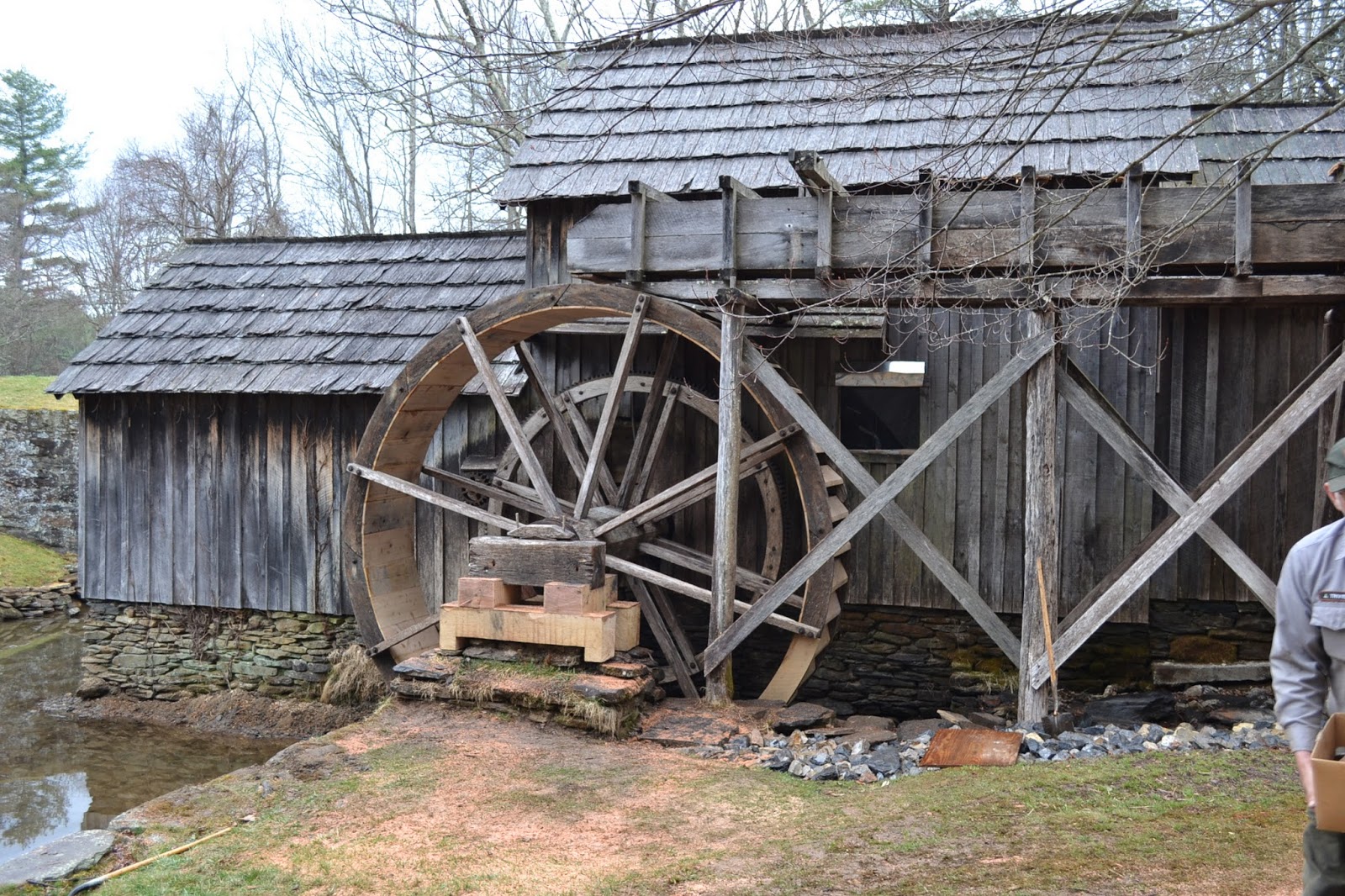 |
| Photos by Jack Betts, Rocky Knob Writery LLC |
Here's how things stood at the end of last week, when a thunderstorm that sounded like cannons booming over the ridge brought an early end to the workday. You can see that the 16-foot waterwheel has all new buckets (48 of 'em), and all new fascia boards adorn the outsides of the wheel and new support blocks hold up the outside end of the waterwheel axle.
But there were some unanticipated problems. Early on, Parkway workers removed one of the 16 old arc-shaped facia boards from the wheel to use as a pattern in cutting new white oak board at the Historic Preservation Shop in Sandy Flats, near Blowing Rock. It was a great idea. Jack Trivett and Steve Marmie came up with some woodworking jigs that made it relatively easy to run the inside and outside arcs through bandsaws. Workers could get a lot of work out of the way before driving up to Mabry Mill. And because the arc came off the wheel, it would be a perfect fit. "No doubt in my mind that it would be exactly right," remarked Marmie. "Just no doubt about it."
Except it wasn't a perfect fit. The old arc didn't quite fit the wheel. It didn't look bad from 100 feet, but the closer you got, you could see it has a flaw -- almost a flat place where there should have been a smooth, continuous arc of a circle. "We're perfectionists," mused Trivett. "If we're going to do something, we're going to do it right." It was more than a point of pride with these men. They just don't believe in doing something the wrong way and then walking away without fixing it.
The solution, since most of the material cut from the white oak had been used up, was to go back up in the E.B. Jeffress Park, haul out another 8-foot or so section of that tree, carry it back to the sawmill and get new sections from which to cut a better arc. But this time the craftsmen would bring the large planks to Mabry Mill so they could scribe the exact arc needed for each section and cut it on site -- custom fitting each one, in effect. Here's Trivett working on the inside arc, using a circular saw, taking a little more wood out of the kerf on each pass as he increased the depth of the blade. Using any other kind of saw would not have given the same smooth shape to the cut.
And here Marmie hammers a galvanized nail into the lower end of an arc section.
There were other things to deal with. When the new waterbuckets were assembled on the wheel a few weeks ago, they were butted tightly to one another. But the water flume repairs were not complete, it didn't rain a whole lot, and the green-cut white oak began to dry out and shrink. The water buckets wouldn't hold water as well as planned, and Parkway workers made replacement pieces for some cracked parts and more backing boards for each leaking seam.
All this took a lot of time, and by then the weather wasn't cooperating. It reduced the time available to haul the finishing trim strips out of the creek where they had been soaking to keep them supple. That way they wouldn't split or snap when it came time to clamp them in place and drive their fasteners to give the inside and outsides of the wheel a finished look as well as adding strength to bucket joints.
Though most of the restoration work is done, it may be a race against the calendar. Thunderstorms are in the forecast for all week, and the Mabry Mill gift shop and restaurant -- a favorite place to dine for local residents as well as Parkway travelers who come from hundreds of miles away to eat there -- is to open on Thursday May 1. Still, the old mill is looking good, and it shouldn't take long to do what is left to be done -- if only the weather will cooperate a bit.





































